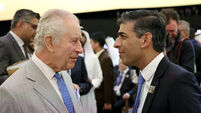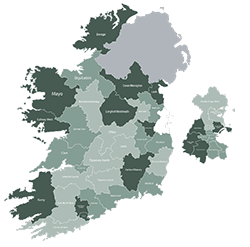Singing to babies is vital to help them learn language, say scientists

The study’s author said: “Parents should talk and sing to their babies as much as possible or use infant-directed speech like nursery rhymes because it will make a difference to language outcome.” File picture: iStock/Kosamtu
A, B, C, D, E, F, G, H, I, J, K, L, M, N, O, P … How many would read this to a tune?
According to scientists from the University of Cambridge, there’s more to the earworm than infuriating parents across the English-speaking world—they have found that singsong speech is crucial to helping babies learn language.
The study concluded that infants learn languages from rhythmic information—the rise and fall of tone—as seen in nursery rhymes or songs, such as the ubiquitous alphabet song.
The team at Cambridge also discovered that babies do not begin to process phonetic information—the smallest sounds of speech—until they are about seven months old.
The researchers said that the findings, which have been published in the journal Nature Communications, challenge the view that phonetic information— typically represented by the alphabet—is the key to language learning.
They said it also suggests that dyslexia and developmental language disorder may be associated with rhythm perception rather than difficulties with processing phonetic information.
Professor Usha Goswami, a neuroscientist at the University of Cambridge who is the study’s author, said: “Parents should talk and sing to their babies as much as possible or use infant-directed speech like nursery rhymes because it will make a difference to language outcome.”
It has previously been thought that infants learn small sound elements and add them together to make words.
To understand whether that was the case, the researchers recorded the brain activity of 50 infants at four, seven and 11 months old as they watched a video of a primary school teacher singing 18 nursery rhymes. The team used special algorithms to interpret how the infants were encoding this information in the brain.
The scientists found that phonetic encoding in babies emerged gradually over the first year of life, beginning with dental sounds (produced by the upper front teeth)—such as “d” for “daddy”—and nasal sounds (produced when airflow is directed through the nose)—such as “m” for “mummy”.
Prof. Goswami said: “Infants can use rhythmic information like a scaffold or skeleton to add phonetic information on to. For example, they might learn that the rhythm pattern of English words is typically strong-weak, as in ‘daddy’ or ‘mummy’, with the stress on the first syllable.
“They can use this rhythm pattern to guess where one word ends and another begins when listening to natural speech.”
She said rhythm is a universal aspect of every language where all babies “are exposed to … a strong beat structure with a strong syllable twice a second”, adding: “We’re biologically programmed to emphasise this when speaking to babies.”














